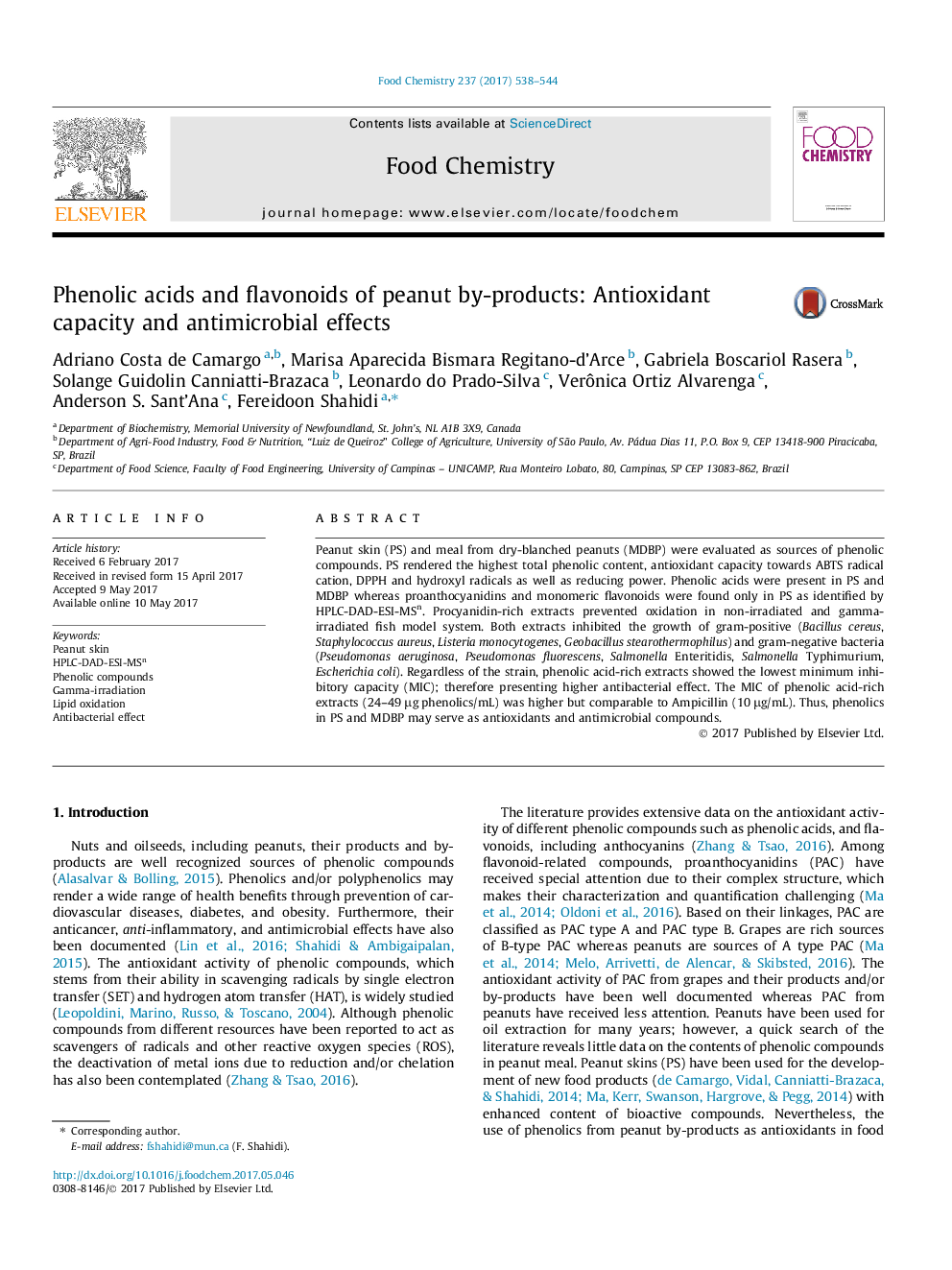| Article ID | Journal | Published Year | Pages | File Type |
|---|---|---|---|---|
| 5132749 | Food Chemistry | 2017 | 7 Pages |
â¢Phenolics of peanut skin (PS) and meal from dry-blanched peanuts (MDBP).â¢PS phenolics showed higher antiradical activity and reducing power than MDBP.â¢Phenolics of PS and MDBP showed antimicrobial activity against nine bacteria tested.â¢Phenolics of MDBP may serve better than those of PS as antimicrobial compounds.
Peanut skin (PS) and meal from dry-blanched peanuts (MDBP) were evaluated as sources of phenolic compounds. PS rendered the highest total phenolic content, antioxidant capacity towards ABTS radical cation, DPPH and hydroxyl radicals as well as reducing power. Phenolic acids were present in PS and MDBP whereas proanthocyanidins and monomeric flavonoids were found only in PS as identified by HPLC-DAD-ESI-MSn. Procyanidin-rich extracts prevented oxidation in non-irradiated and gamma-irradiated fish model system. Both extracts inhibited the growth of gram-positive (Bacillus cereus, Staphylococcus aureus, Listeria monocytogenes, Geobacillus stearothermophilus) and gram-negative bacteria (Pseudomonas aeruginosa, Pseudomonas fluorescens, Salmonella Enteritidis, Salmonella Typhimurium, Escherichia coli). Regardless of the strain, phenolic acid-rich extracts showed the lowest minimum inhibitory capacity (MIC); therefore presenting higher antibacterial effect. The MIC of phenolic acid-rich extracts (24-49 μg phenolics/mL) was higher but comparable to Ampicillin (10 μg/mL). Thus, phenolics in PS and MDBP may serve as antioxidants and antimicrobial compounds.
